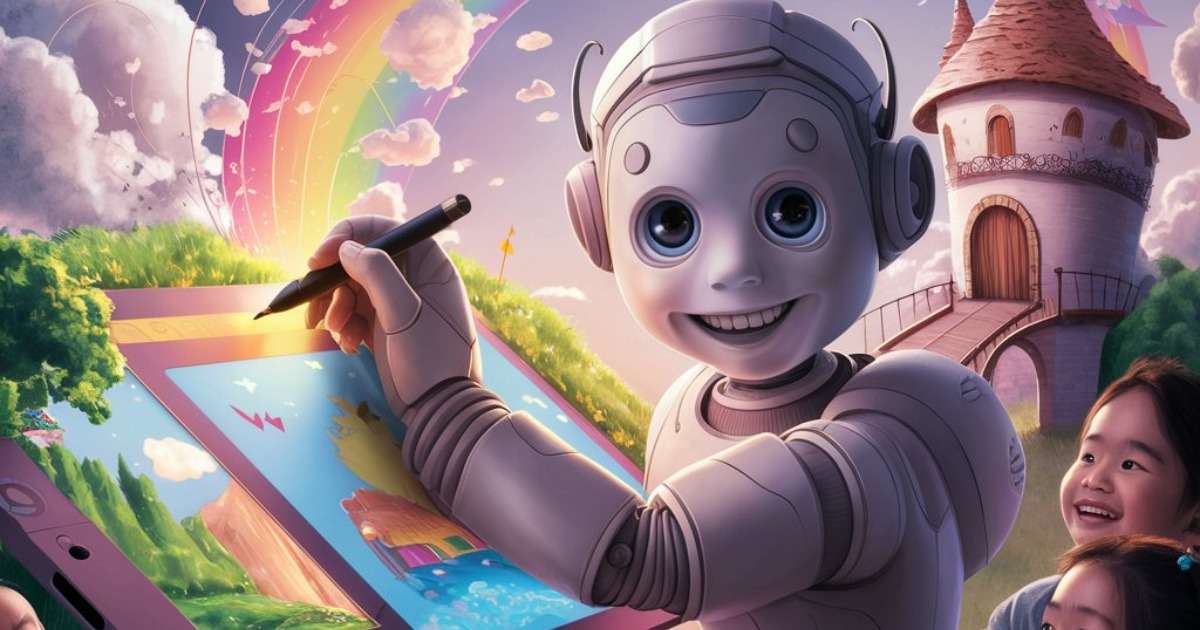In a time when technology meets creativity, Artificial Intelligence (AI) has become a powerful influence in poetry and creative language. This detailed guide explores the new uses of AI in poetry and creative writing showing how AI has an impact on creativity, the top tools available, and the chance to improve translations. By learning about these improvements, you can discover new layers of creative expression and make your work better with AI’s help.
How to Use AI for Poetry?
AI can be a great help in the world of poetry providing tools and methods to improve the creative process. Here is how you can use AI to write poetry:
- Generating Poetic Ideas: AI can offer prompts and inspiration to make poems helping you beat writer’s block. Tools like ChatGPT can create starting lines or themes to spark your creativity.
- Creating Rhyming Structures: AI can help in making rhyming words and structures to make poems with specific rhythmic patterns. Tools like RhymeZone can work with AI to suggest rhymes and synonyms.
- Stylistic Emulation: AI can study and copy the styles of famous poets letting you try different poetic forms and techniques. This can be helpful to learn and practice various styles.
- Real-Time Feedback: AI tools can offer immediate feedback on your poetry by suggesting better meter, word selection, and general coherence. Tools like Grammarly can improve your poems in terms of quality and ease of reading.
- Multilingual Poetic Creation: AI can aid in composing poetry in several languages by offering translations and making sure that the poetic spirit is maintained across languages. Google Translate powered by AI, can aid in creating poems in different languages.
How is AI Used in Creative Drawing?
AI is causing a revolution in the field of creative writing by offering tools that make the writing process better and quicker. Here’s how AI is used in creative writing:
- Idea Generation and Brainstorming: AI can make ideas for stories, characters, and plots from user input. Tools like Jasper AI offer creative prompts and suggestions to inspire new writing projects.
- Content Generation: AI can produce content based on specific themes or genres. For example, OpenAI’s GPT-4 can make short stories, scripts, and even novels helping writers find new creative paths.
- Character and Plot Development: AI can help in creating complex characters and plotlines by studying successful narratives and offering improvements. This assists writers in making more exciting and dynamic stories.
- Language and Style Adaptation: AI can change writing to suit various styles and tones to connect with the right audience. This helps writers who create in different genres.
- Editing and Proofreading: AI tools offer immediate editing and proofreading to make sure the content is refined and mistake-free. Tools like ProWritingAid can improve the quality and clarity of your writing.
How is AI Used in Creativity?
AI serves as a catalyst to creativity by offering tools and methods that enhance human creativity across different areas. Here’s how AI is used to boost creativity:
- Art and Design: AI can produce artwork, designs, and graphics as per user demands. Tools like DALL-E can develop visual art that is not like others motivating new creative works and designs.
- Music Composition: AI can make music through the analysis of patterns and styles in ready compositions. Tools like Amper Music use AI to make new music pieces helping musicians in their work to create.
- Creative Problem Solving: AI can examine difficult problems and give new ideas by locating patterns and relations not obvious to humans. This helps a lot in careers like engineering and architecture.
- Interactive Storytelling: AI can build interactive tales that change depending on user decisions giving an active and compelling experience in storytelling. Tools such as AI Dungeon let users find and make personal stories.
- Content Personalization: AI can customize content to fit personal tastes improving user involvement and happiness. This method is common in marketing where tailor-made content can lead to more user interaction.
What is the Best AI Tool for Poetry Writing?
Selecting the right AI tool to write poetry depends on your special needs and likes. Here are some of the best AI tools to write poetry:
- ChatGPT by OpenAI: This AI tool generates poetic lines and ideas from prompts. It suits brainstorming and early drafts.
- Jasper AI: This tool is noted for its creative writing abilities. Jasper AI helps write poetry by giving prompts and style tips.
- Poet Assistant: Aimed at poetry, this tool provides rhymes, synonyms, and poetic phrases. It works well for making structured lyrical poems.
- RhymeZone: Though not an AI tool, RhymeZone works with AI to find rhyming words and phrases. It supports making rhythmic poetry.
- Verse by Verse: A product made by Google, Verse by Verse lets users work with AI to create poems like famous poets, offering inspiration and style advice.
Using AI to Make Your Creative Writing Translations Better
To make creative writing translations better with AI, use top tools and methods to keep the artistic and cultural details of the original work. Here is how to use AI to improve your creative writing translations:
- Choose the Right AI Translation Tool: Pick an AI tool that is good at translating creative content. Tools like DeepL are good for managing complex and detailed language, which is great for translating creative writing.
- Pre-Translate and Edit: Use AI to make a first translation and then review and change the content by hand to keep the creative spirit. This includes adjusting language, style, and tone to be like the original work.
- Contextual Analysis: AI tools like Google Translate now understand context better, which helps keep the meaning and feeling of the original text in translations. Use these tools to maintain context in your translations.
- Leverage AI to Create Cultural Sensitivity: AI can explore cultural environments and recommend suitable language and wording to make sure the translation connects with the target audience. This is important to keep the cultural impact of creative works.
- Iterative Refinement: Employ AI to continuously improve the translation comparing various versions to find the best possible version. This repetitive process aids in creating a translation that is both precise and interesting.



